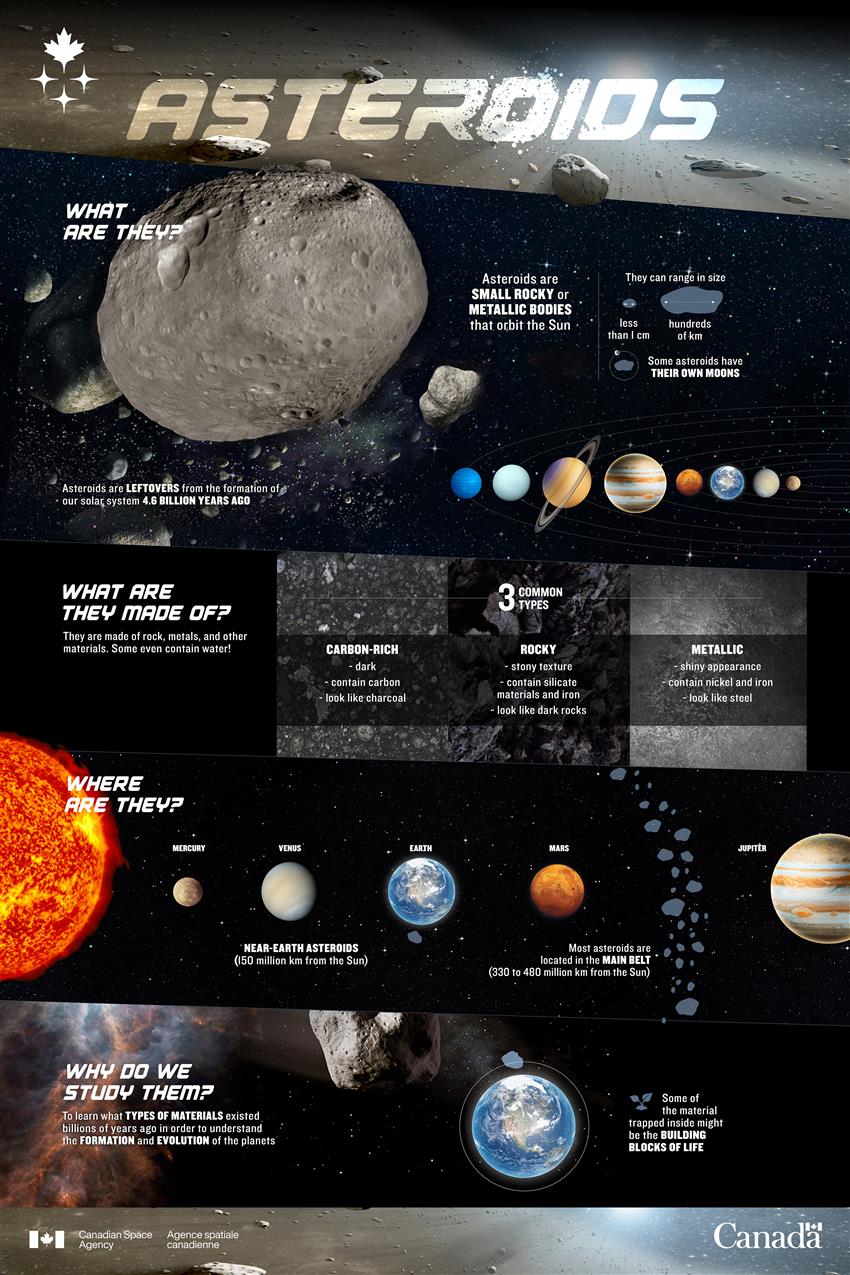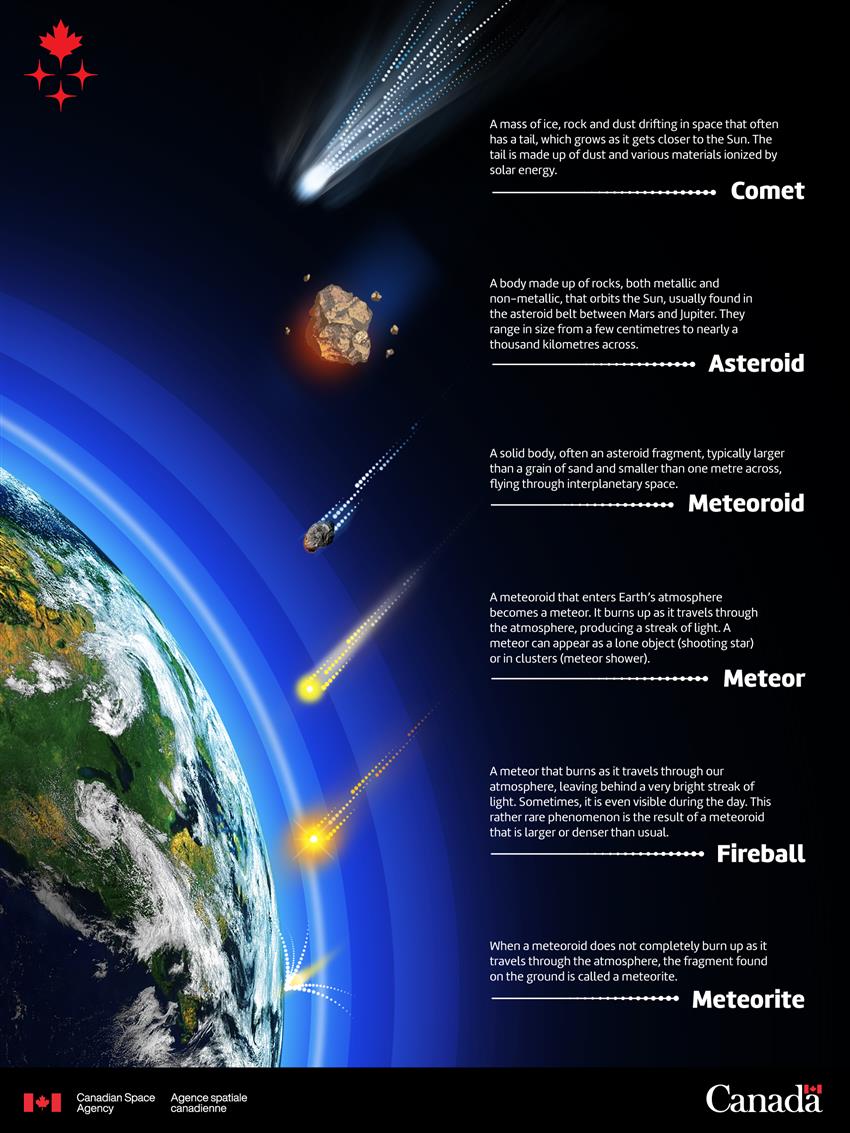What are asteroids?
Asteroids are essentially remnants of the primitive building blocks that created the terrestrial planets in our solar system. Scientists believe that asteroids have not changed very much since the time they were formed, making them cosmic time capsules that can reveal how planets like our own world formed.
This video is about asteroids, their size, where they are, and how we observe them. (Credit: Canadian Space Agency [CSA])
In addition, asteroids are thought to contain organic molecules like amino acids—the basis for proteins and DNA—leading to speculation that a meteorite from an asteroid could have seeded the early Earth with the building blocks of life.
Despite what Hollywood movies may lead us to believe, the risk of a collision between an asteroid and Earth is extremely small. NASA's Center for Near-Earth Object Studies regularly monitors the orbits of near-Earth asteroids and calculates their risk of impact within the next 100 years.

Text version - Asteroids – Infographic
Quick facts about asteroids, our solar system's cosmic time capsules. (Credit: CSA)
OSIRIS-REx is Canada's first participation in an asteroid sample-return mission. Using Canadian instrument OLA, the spacecraft will create a 3D map of Bennu's surface, allowing scientists to select a sample site. Canada will receive a portion of the asteroid material.
Check out this video to learn what asteroids are and what they can teach us about the earliest days of our solar system. (Credit: CSA)

Text version - Comet, meteor or meteorite? Illustration
Illustration providing an overview of the characteristics of comets, asteroids, meteoroids, meteors, fireballs and meteorites. (Credit: CSA)